The 2014 Razer Blade Review
by Brett Howse on October 10, 2014 9:00 AM EST- Posted in
- Notebooks
- Gaming
- Laptops
- Razer Blade
Display
The 2013 Razer Blade was a fine system, offering reasonable battery life, reasonable weight, and good gaming performance all in an attractive aluminum package. The one stand-out flaw was the display. 1600x900 was a reasonable resolution for the GPU in the device, but the quality of the TN panel was, well, atrocious. Razer has gone all out to correct this glaring flaw for this year, offering a stunning 14 inch panel from Sharp.
The 3200x1800 panel in the new Razer Blade is easily one of its defining features. It features 262 pixels per inch, and to counter the higher power draw required of high PPI panels, they have implemented an indium gallium zinc oxide (IGZO) thin film transistor (TFT) for the panel, which allows a full RGB stripe but keeps the power requirements of the backlight in check because the IGZO TFT is thinner than traditional amorphous silicon TFTs. Lower cost panels such as the Lenovo Yoga 2 Pro use RGBW, with the white pixel to improve the transmission of light through the panel. IGZO is a better solution for image quality and color accuracy.
The 2013 Blade featured a twisted nematic (TN) panel, and it was far from the best TN panel available. It suffered from horrible viewing angles and very poor contrast. Luckily the new panel is either an in-plane switching (IPS) LCD or possibly Sharp's UV²A which is a form of ASV panel. There is not a lot of info out there for this exact panel, but the viewing angle problem is gone. IPS and MVA panels can be a bit slower than TN panels, but I did not notice any ghosting with this panel during gaming. Also, the new Blade features 10-point multi-touch.
High DPI panels have been discussed a lot, and while not every program is perfect on a high DPI windows laptop, the app gap has certainly closed. Major applications have taken a while to get updated, but we are now at the point where the benefits of a high DPI display outweigh the negatives. Google Chrome, long notorious for horrible high DPI support, has now been updated, and just recently Adobe has also updated their applications with high DPI support. Day to day use is no longer an issue, but if you still have an old program that will not run well on a high DPI display, there is always the option of lowering the resolution to 1600x900 (or even running at 1080p if you don't mind the non-integer scaling).
Moving on to display testing, let's look at the characteristics of this display and see how accurate it is out of the box as well as calibrated. This may not be a laptop designed for image professionals, but an accurate display is always good to have. Razer has gone to the length of including a default color profile for this laptop called Blade.icm. This should mean that some attention to detail was paid to the accuracy of the display, which is a good sign.
To test the display, we use the CalMAN 5 software suite with a custom workflow. An X-Rite i1 Display Pro is used for contrast readings, and an X-Rite i1Pro spectrophotometer is used to perform the grayscale and color accuracy.
Uncalibrated with default Blade.icm profile

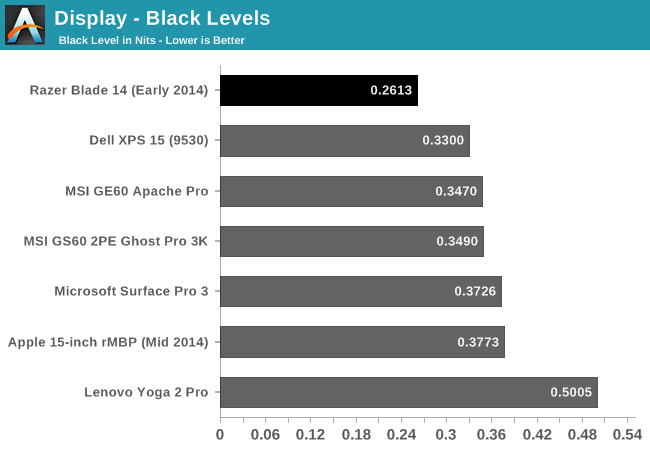
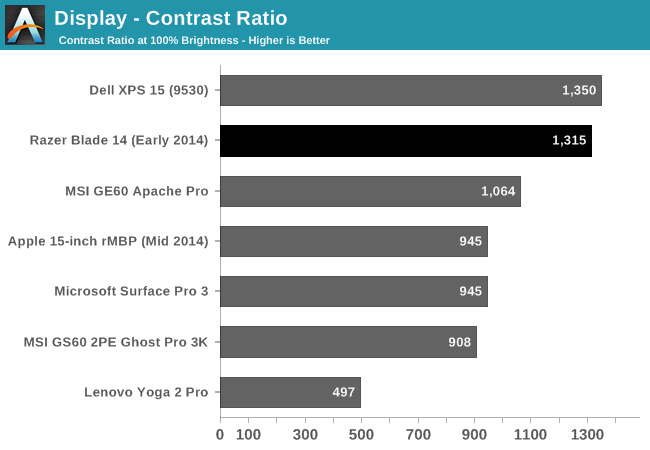
Razer rates the Blade at up to 400 nits of brightness, but the sample I received was not quite able to achieve that level even with the default profile bypassed. Still, 343 nits is a decent result and plenty bright for most environments. The black levels on the other hand are fantastic, which leads to one of the highest contrast ratios for any laptop we have tested.
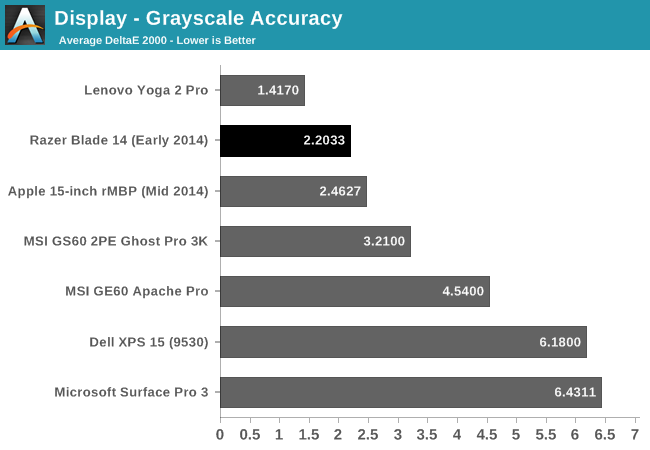
The white point is almost perfect out of the box. The grayscale is also excellent, though somehow the Yoga 2 Pro manages better with an RGBW display.
The blue values are a bit oversaturated on the sweeps, but once again the Razer Blade has a fantastic result, basically tied with the Retina MacBook Pro for the best we have tested.
Once again, the Razer Blade scores the best of any device we have tested.
This is an impressive display out of the box. The default color profile is excellent and the Razer Blade has basically the best display of any laptop we have tested. The one potential issue is the blue saturation is high, but it is a great result nonetheless.
As good as the display is with a default profile, we can still calibrate it using the CalMAN software to see if we can do better.
Calibrated
Calibrating for sRBG and Gamma 2.2, the results are nothing short of fantastic. Grayscale is an amazing 0.5177, the saturation drops to 1.1976 and GMB is 1.0426. The only issue is still with the blue being slightly oversaturated. 100% blue has a Delta E of around 5, but other than that the rest of the results are excellent.
The 2013 Razer Blade had an amazingly bad display, and it looks like Razer learned from that and not only did they put in a good display, they put in a fantastic display. At 262 PPI, it is higher density than the Retina MacBook Pro, and the panel delivers fantastic, colors, contrast, and grayscale out of the box.


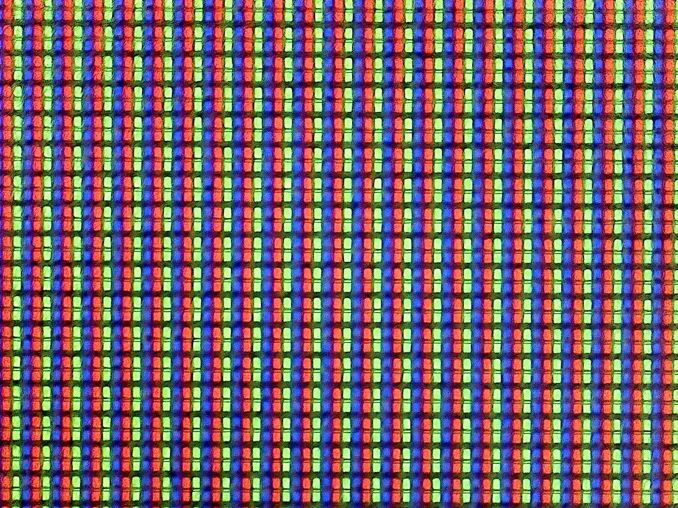

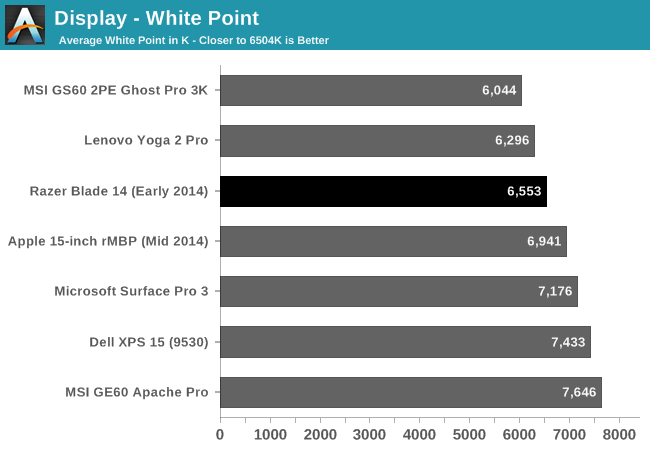

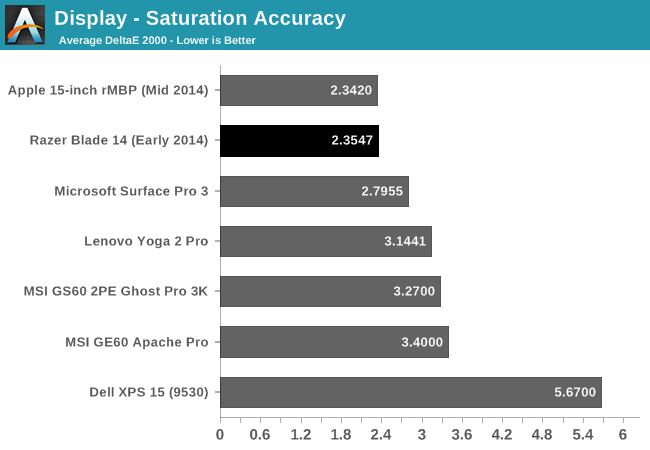

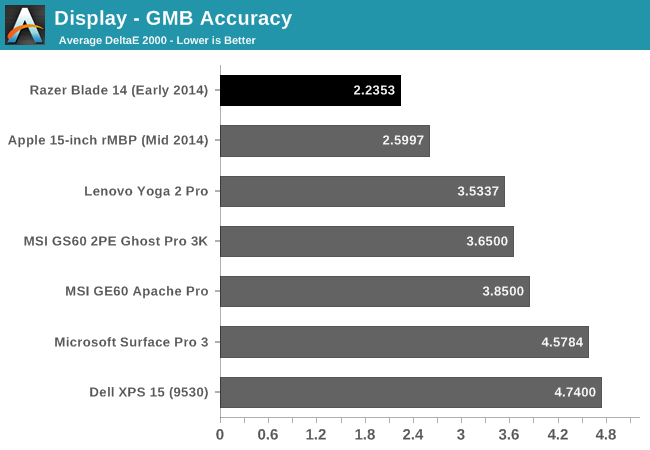

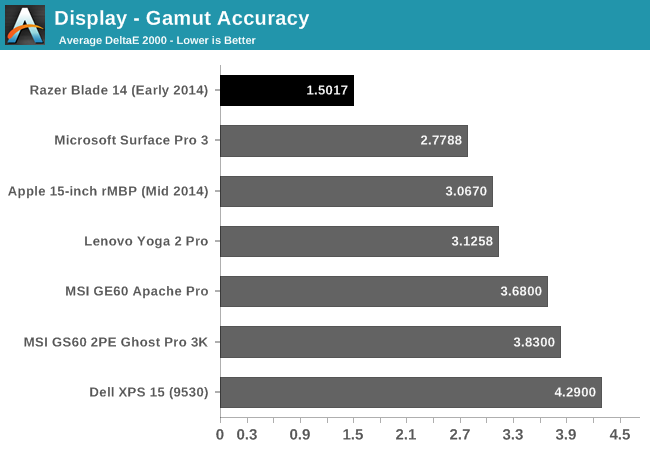

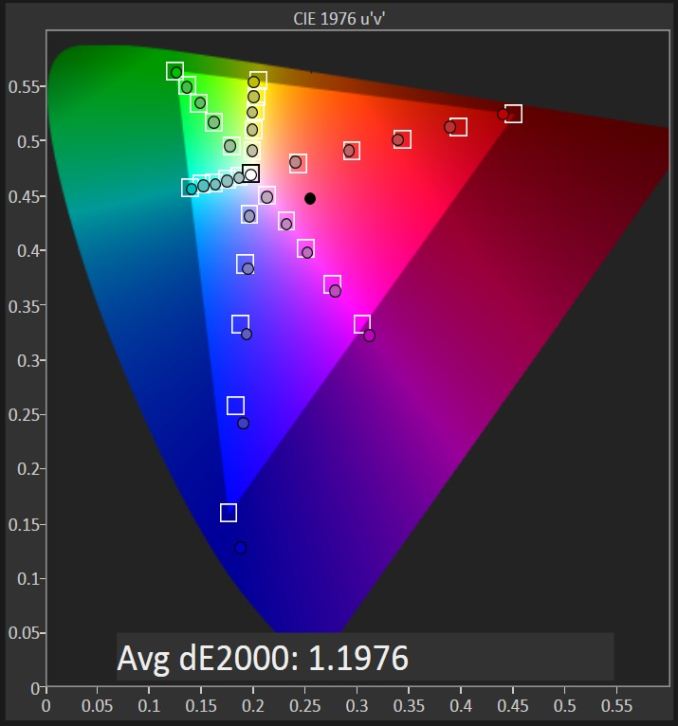










69 Comments
View All Comments
wrkingclass_hero - Monday, October 13, 2014 - link
He didn't retire. You could say he left, he moved on, he departed, he resigned, he stopped working at Anandtech, he quit, he's following a new career path, he's pursuing other interests, following other pursuits, etc. I realize that you don't want to say that the review was shelved due to conflict of interest because he works at Apple, but you can be discreet without being deceptive.He and Brian are about as retired as Dustin and Vivek.
fabarati - Tuesday, October 14, 2014 - link
Here retired means retired from Anandtech. Perfectly valid language.invinciblegod - Friday, October 10, 2014 - link
So I guess they gave up on the Razer Edge?tipoo - Friday, October 10, 2014 - link
Wowza, didn't know the Surface Pro 3 was that efficient per milliwatt. What magic is going on there? Lower wattage, but doesn't the Yoga Pro 2 also have a ULV?Waveblade - Friday, October 10, 2014 - link
Probably one of the better binned CPUs? Or less turbo boostingtipoo - Friday, October 10, 2014 - link
They perform pretty close I think. Could also be the display panel.Walkop - Saturday, October 11, 2014 - link
It's the display. It's stupidly efficient.Something like 3w. The iPad Air (10") uses 6w. Much bigger yet half the power. Normalized for brightness it's still twice as power efficient.
Flunk - Friday, October 10, 2014 - link
They really rake you over the coals with those storage prices, especially because you have to disassemble it to change the SSD.XabanakFanatik - Friday, October 10, 2014 - link
I can tell you from experience that replacing the SSD in this specific laptop is significantly easier than you think. The bottom must be taken off since it is one piece, and a ribbon cable over the drive must be removed. Takes less than 5 minutes, even with being very careful, to get access to the drive.XabanakFanatik - Friday, October 10, 2014 - link
The issue is the price of M.2 SSD's and the actual offerings for SATA M.2 drives. It was cheaper to buy the 512GB model with the student discount from the microsoft store (10% off) than to buy the 128GB model without discount and replace the drive with a 512GB M550 M.2 drive.